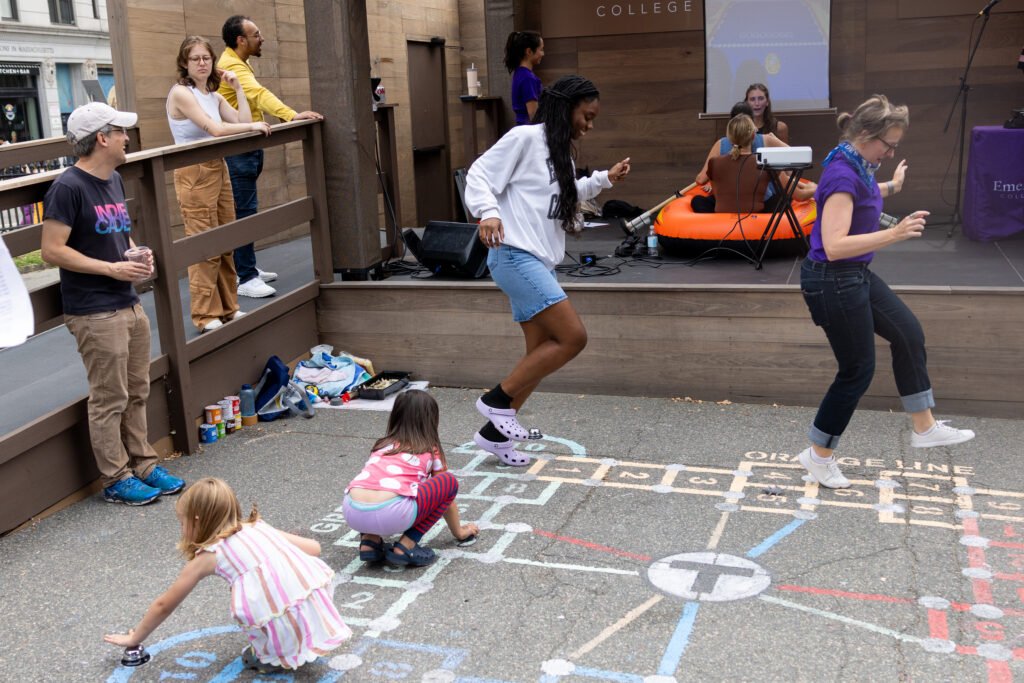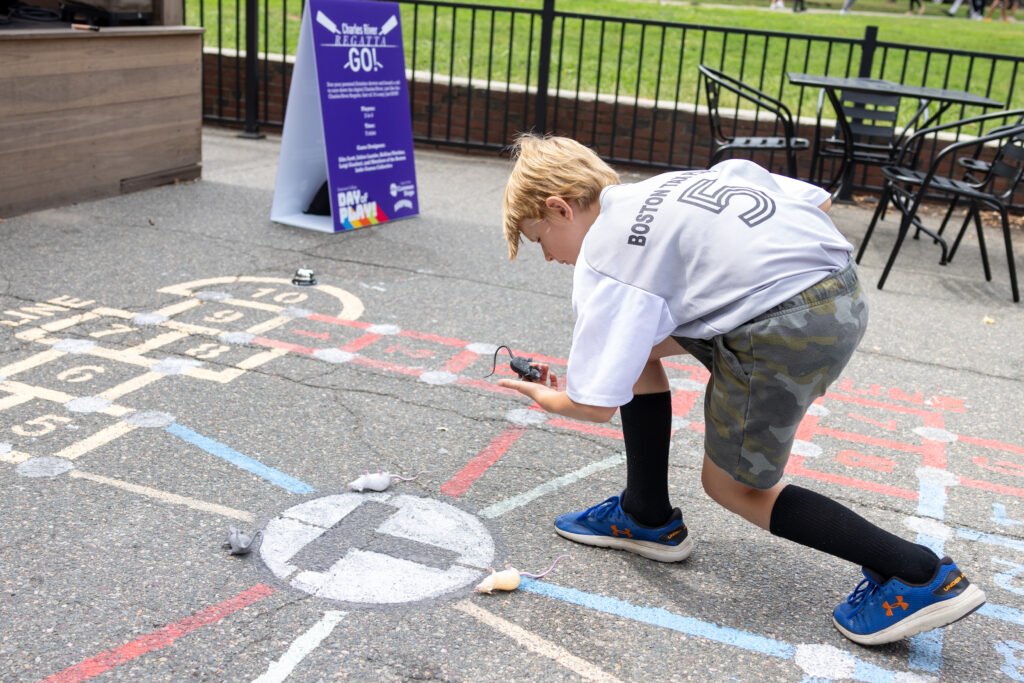From Hopscotch to Video Games: VMA Expanding Game Design Curriculum
With the video game industry around $200 billion and climbing, Emerson College is looking to expand its game design and development curriculum, preparing students for jobs in the growing field.
“We see opportunities for students that can emerge in that field,” said Visual & Media Arts Chair Shaun Clarke, who said students have expressed an interest in more video game classes in the curriculum.
“The skills needed to make a movie overlap a lot with skills to put together a video game,” he said. “When you play a video game nowadays, they are extremely cinematic. It takes people familiar with cinematic language to operate and be effective in the video game space.”

Clarke said students are interested in learning more about all types of games: analog, board games, and all the genres of video games.
First Things First
Before there were video games there were board games and games like hopscotch.
VMA Associate Professor Sara Zaidan teaches Introduction to Game Design and Introduction to Video Game Design. In the former, students learn the basic tenets of games: the challenge, how to create rules, what makes a successful game – all of which apply both to analog games and video game design.
Zaidan’s students devised a new form of hopscotch which was demonstrated as part of the Emerson-facilitated Day of UnCommon Play on September 7 at the UnCommon Stage. Students, including Habeebh Sylla ’25, who took Zaidan’s Video Game Design class, facilitated interactive games that anyone was encouraged to play as they passed by the stage situated in Boston Common.
“The focus of the class was to help us understand how a game is created through fundamental design elements and rapid prototyping,” said Sylla, “meaning making quick versions of games to understand how we can improve them further. But it also mimicked the game development industry, because they usually have really tight deadlines.”

Four student-developed games were offered at the UnCommon Day of Play including one that Sylla designed, Difficult Hopscotch. Each game played off the theme of Getting to Know One Another and the city. The four hopscotch tracks are themed around the four major MBTA lines.
“Difficult Hopscotch is a reflex and timing game where you have four hopscotch boards arranged in a square – each one is a different color, and each player picks what color they want, and get two bean bags matching their color,” explained Zaidan. “To win the game you have to make your way around the entire board back to the beginning.”
Difficult hopscotch, indeed. Players also throw bean bags at the start of game, and if they land on the board of a different color, that person has to jump over the beanbag. Zaidan said there’s an element of strategy and randomness because you can’t control where the beanbag goes.

Other student-created games included Troll Hunt, Competitive Friendship, and the Boston Tea Party Reenactment. For the last one, beanbags used in the game represent the tea thrown into the harbor, but in the game, they’re tossed into a kiddie pool.
Zaidan explained the difference between developing analog games and digital games.
“The main difference has to do with the final form of the game,” said Zaidan. She said the Intro to Game Design class is completely analog because it’s very challenging to learn and apply design philosophies within a semester. “Programming is time-intensive.”
Zaidan’s class worked with Kelliann Adams Pletcher, game maker FableVision’s Director of G.L.A.M. (Galleries, Libraries, Archives, and Museums), who served as a project manager.

The Big Picture
Helping to move Emerson game design classes into the digital realm is Visual & Media Arts Assistant Professor Laurie Mazza, who joined the faculty this fall.
Her teaching focuses on game engines and tools, scripting for non-programmers, and using technology to enhance creative practice. Her work explores the use of augmented reality, virtual reality, and other immersive technology to create interactive experiences and improve development pipelines, while understanding the relationship between humans and technology.
“I’m excited to help students to see the potential in technology practices to pick up the skills and use them in their creative practice,” said Mazza. “I’m helping them see the big picture of game development.”
Mazza said she wants students to develop the real-world mindset that it’s OK to change your mind or pivot.
“Whether it be redrafting an idea, or doing a 180 with the idea,” said Mazza. “That’s a big [rut] game designers run into after they’ve fallen into a time [crunch] situation and think they have to keep going. I hope I can help them slowly break away from that bad habit.”
Mazza’s expertise complements VMA Professor John Craig Freeman’s work and teaching in the AR and VR space.
VMA’s expansion of game design and development curriculum could be a huge gamechanger.
“This has the potential to immensely impact what our students can create, stories they can tell, and audiences they can reach,” said Zaidan. “[New courses have] the opportunity to be a very strong tool as media makers and storytellers.”
Categories